Charleston, South Carolina is one of America’s oldest cities. It is also a great travel destination during the spring.
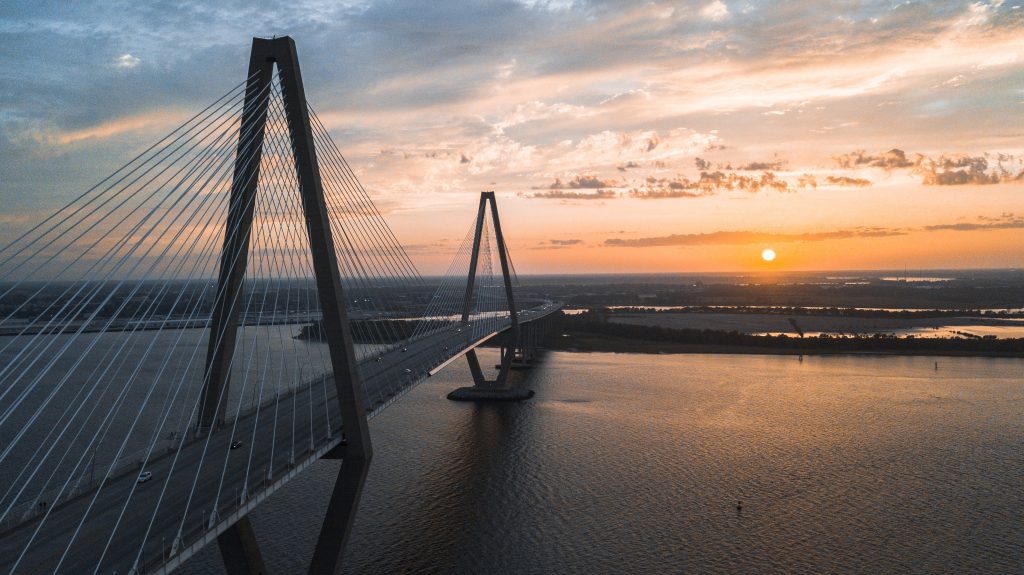
When to Visit
For most people, either spring or fall will be the best time of year to visit Charleston. The spring season, March to May, peaks in April when the weather and flowers are at their best. The fall season also offers excellent weather, with October and November being most popular.
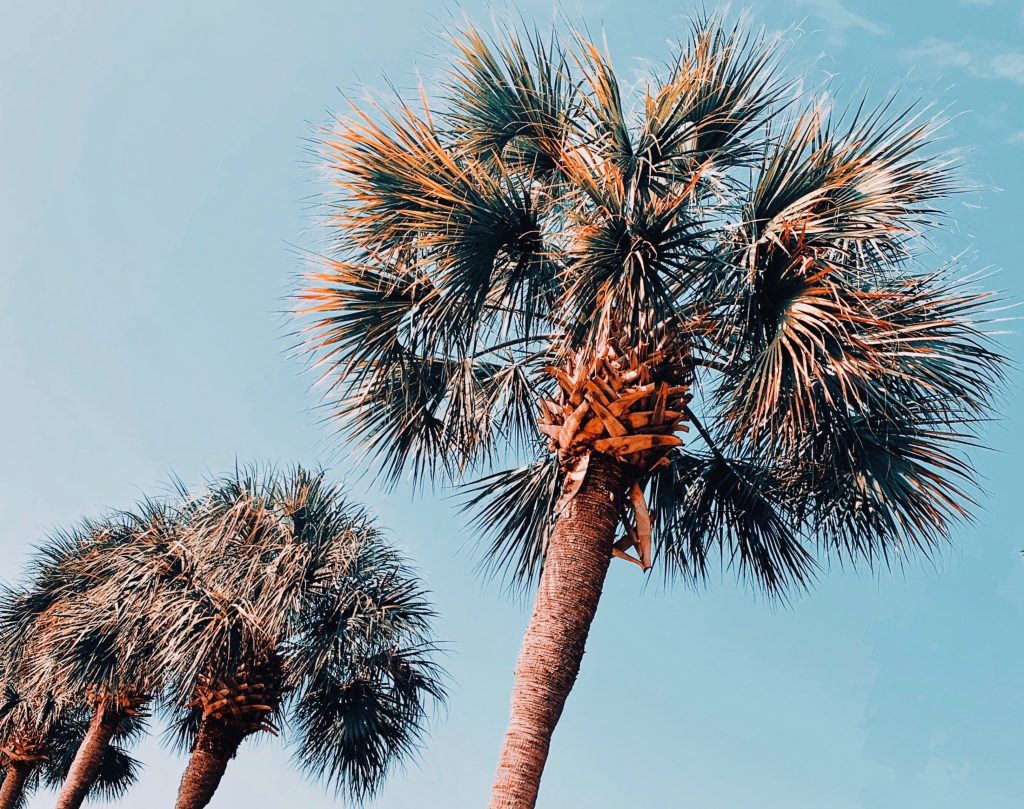
Charleston is a much-visited destination year-round. However, high summer and late winter are the off-seasons. The crowds thin out in July through September. Many travelers prefer to head to the beach, and again in January through part of February.
Spring Time Weather
Generally speaking, either spring or fall is the ideal time to visit Charleston. The low country for the most agreeable weather, and in particular, either April or October. At these times of year the temperature is usually pleasantly warm, without the extreme heat and humidity of summer.
Springtime and fall temperatures are usually in the 60-80°F range (17-28°C). Many sunny or mostly sunny days and much less rain than summer.
Charleston’s summers are very hot and humid. Average highs are in the upper 80s to low 90s (29-33°C), and the humidity can be oppressive. The hot season lasts from June through September, with the months of July and especially, August, best avoided if possible.
Best time for Activities
With a few exceptions, the majority of Charleston’s biggest festivals and events are timed for the seasons. Typically, the weather is at its best: spring and fall.
The city’s event calendar starts up properly around mid March. With music festivals, cultural celebrations, house and garden tours, arts festival; and more filling up the months of spring. Winding down after the Spoleto Festival in early June.
The festival season picks up again in September, continuing through October and November. Many of Charleston’s biggest food, music and arts festivals are scheduled for this time of year.
Charleston is also a great destination for the holidays. Many special festive events – food and drink events, holiday decorations, seasonal concerts and performances, light displays and so on; are organized for this time of year.
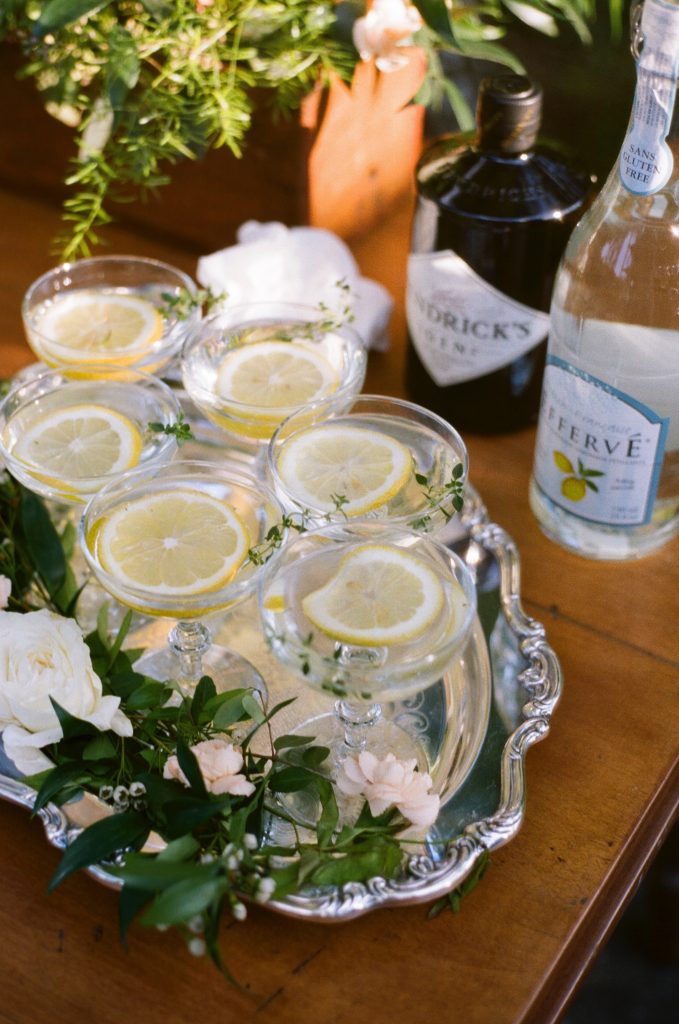
Several of Charleston’s festivals and events can attract large crowds. It can be best to avoid these days if you are not interested in the event itself. The Spoleto Festival in June is a particularly big draw, bringing huge crowds to the city. You will need to book well ahead if you want to visit during this period.
History of Charleston
In 1669, under the leadership of Captain Joseph West, three vessels; the Carolina, the Port Royal and the Albemarle set their sites on the new land, America. A severe storm separated the three ships, wrecked the Port Royal and forced the Carolina to land in Bermuda. In the Spring of 1670, 150 English colonists, indentured servants and slaves sailed into the Charleston harbor.
The first view of what would become the new colony of Carolina came in March 1670 at Bull’s Island. The travelers landed on a promising location they christened Albemarle Point in April 1670. The Proprietors soon flattered their king, Charles II, by insisting the settlement be named Charles Town in his honor. Enemies of the colony included the French, the Spanish, hostile Indian tribes and pirates. Disease was also rampant due to poor sanitation and an inhospitable location.
Busy Seaport
With its many wharves along East Bay Street, Charles Town became a busy seaport. Ships carrying raw materials, deer skins, rice, indigo, and eventually cotton were exported to England and commerce was born. Ships returned heavy with staples and luxuries of Europe which lent a cosmopolitan air to the growing community. Even in its infancy, Charleston had the reputation of being a “Little London”; in the semi-tropic wilds of the New World. By 1740, Charles Town was becoming the most critical port in North America; for exporting, and an economic boom surged across the colony.
Colonists found out early that the New World had its share of troubles and danger. The coastal town endured a small pox epidemic; a fire which destroyed 1/3 of the colony including 300 houses. A great number of stores were destroyed in just four hours. A plague among the cattle, and yellow fever and several major hurricanes. Disasters continued to ravage the city with fires in 1740, 1796, 1838 and 1861.
Crops and Civil War
In the late 1700s, plantations harvested such crops as indigo (a blue dye) and rice. Long staple cotton grew on John’s Island and James Island. Prosperity from an agrarian society mixed with great interest in cultural affairs. In 1791, President George Washington toured the States. He came to Charleston where he slept in the Heyward Washington House on Church Street. The President entertained at the Old Exchange Building.
Civil War
By 1860, Charleston lay divided concerning States Rights. The Ordinance of Secession signed in December of that year made South Carolina a separate entity from the United States. On April 12, 1861, Confederate troops issued the first shots of the Civil War when they fired upon Fort Sumter, successfully driving out the federal forces. In June 1862, federal troops began their first attempt to capture Charleston when they landed on James Island just southeast of the city.
The Battle of Secessionville occurred when over 6,000 massed Union troops launched an assault across a peninsula where 500 Confederate soldiers with cannons waited. Federal troops suffered 700 casualties; Confederates about 200. But Union forces remained determined to seize Charleston. During the summer of 1863 in battles around the city and at Gettysburg; Charlestonians died or wounded by the hundreds. The Union bombardment of Charleston was sporadic until January 1864. During this, some 1,500 shots left Morris Island; causing many fires. St Philip’s Church sustained damage and its interior hurt extensively. In early 1865, General William Sherman crossed the Savannah River, but aimed at Columbia not Charleston because he believed the port city had lost its influence and was already, according to him, “a mere desolated wreck…hardly worth the time to starve it out.”
Southern Cultural Center
By the early 1900s, Charleston was once again a cultural center. In 1901, the South Carolina Interstate and West Indian Exposition came to Charleston. In the 1920s, the Charleston Renaissance formed with authors Josephine Pinckney, Dubose Heyward and John Bennett expressing their adoration for Charleston. Preservation efforts were firmly in place by the 1940s, allowing Charleston to adapt her old buildings to retain their charm, distinction and tradition.

Then, during the evening of September 21, 1989, Hurricane Hugo with its 135- mph winds headed directly for Charleston. Near midnight, a 12-to-17 foot wall of water swept over Fort Sumter in the harbor and the storm surge came ashore. A week after the storm, preservationists surveyed the city and found that just 25 of the 3,500 historically important buildings severely damaged. With now more than 10 years behind it, Charleston has restored itself with all its original charm and character.
Modern History
With a rich 300 year history, Charleston today is America’s most beautifully preserved architectural and historical treasure. The city’s past is a testament to the spirit and tenacity of its citizens. Its appeal is described as a “living museum.” Charleston native Elizabeth O’Neill Verner once said, “It is impossible for me to enter Charleston from any side, whether by land or by sea, and not feel that here the land is precious; here is a place worth keeping…”
Places to Visit
Angel Oak
The Angel Oak Park is located on Johns Island where you can find what is known as “A Lowcountry Treasure”. The Southern Live Oak tree is a historical site and focal point of one of the City of Charleston’s public parks. It is considered to be the largest Live Oak Tree east of the Mississippi estimating to be 300 to 400 years old.
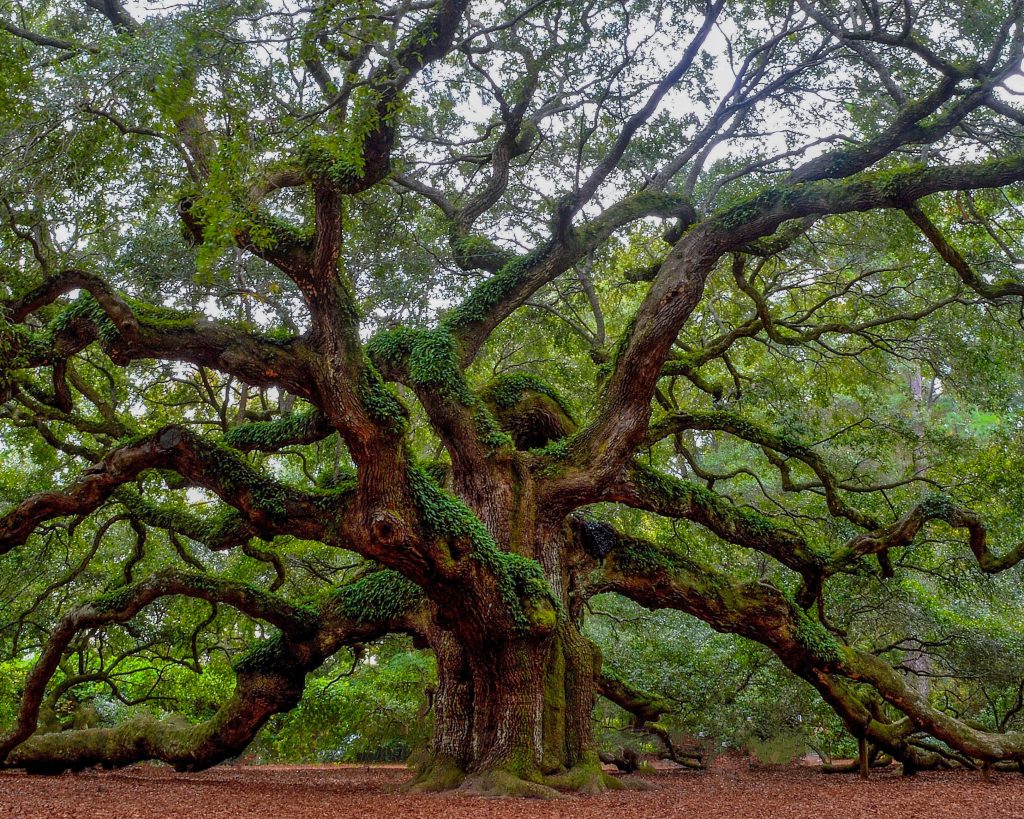
About Angel Oak
The Angel Oak receives approximately 400,000 visitors each year. The tree is 65 feet high with a circumference of 25.5 feet, shading an area of 17,000 square feet. The public access is seven days a week. The park is closed holidays. Admission to the general public is free. But donations are gladly accepted. They help in preserving of the tree for future generations to enjoy. The gift shop provides information and retail merchandise including Lowcountry specialty items, such as memorabilia and keepsakes.
Permits
Permits are required for weddings, wedding or engagement photoshoots and other special events. Contact the City of Charleston’s Recreation Department for information on the permitting process as well as available dates and times 843-724-7327.
Dock Street Theater
Charleston’s Dock Street Theatre is one of the city’s premieres performing arts venues. The theatre was the first building designed solely for theatrical performances and the preservation and maintenance of the historic structure is of the utmost importance.
About Dock Street Theatre
Dock Street operates year round to showcase a variety of productions by both local arts groups and touring companies. The theatre also provides rental space for private events and meetings. The historic building is open on a daily basis for tourists to view. The rich history of the Dock Street Theatre reflects the tradition and culture of Charleston.
Cypress Gardens
Those of you who remember the romantic rowing scene from The Notebook, or the haunting swamp hideout for Revolutionary hero Francis Marion in Mel Gibson’s The Patriot, have already previewed this singular locale. Hollywood location scouts choose Cypress Gardens for its wildly picturesque blackwater swamp, but also for its well-managed accessibility. For $5, you can let a local guide do the paddling for you as he points out wildlife and historical trivia in a wonderfully thick southern accent. Or you can opt to paddle yourself; just follow the little white arrows that suggest a route around the vast bog.
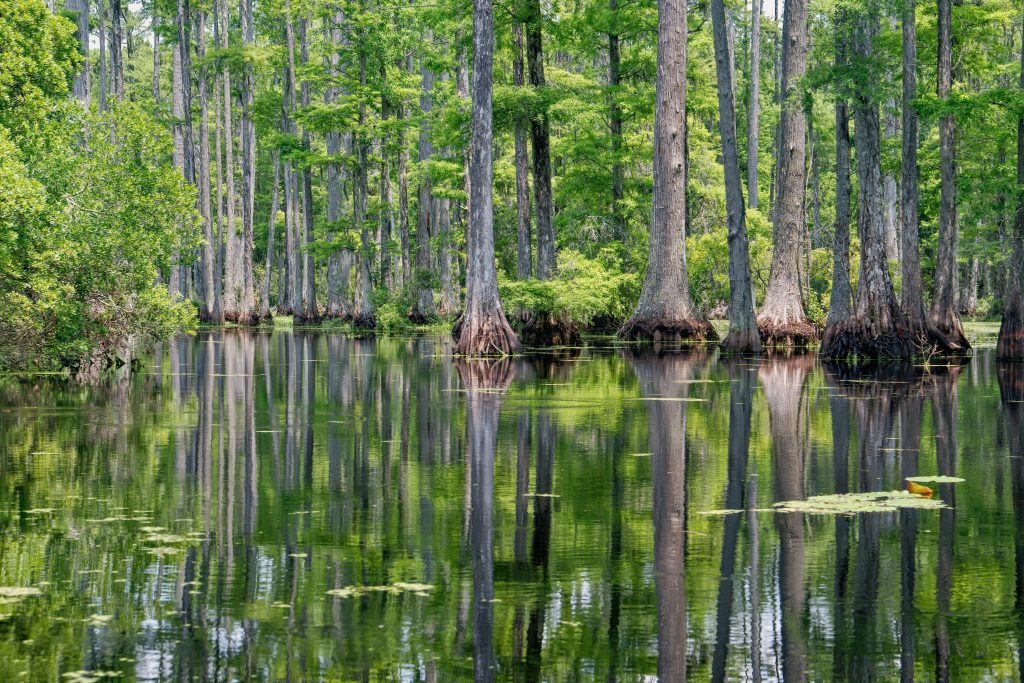
Don’t worry if your boat bounces off a cypress tree or two (it’s hard to steer clear of them all). Duck as you pass under two walking bridges, and keep your eyes out for seasonal birds, alligators, and turtles who have crawled out to sun themselves. Before or after you boat, you should walk at least part of the 3.5-miles of trails encircling the water. It’s beautiful any time of year—each month features different fascinations: camellia blooms and bald eagles in winter, azaleas and wild violets in spring, lily pads and booming frog choruses and droning cicadas in summer, rust-colored foliage and screech owls in fall, plus the egrets and otters.
The Charleston Museum
As museums go, there’s nothing stuffy or old-school about this one, even though it just celebrated its 250th year of existence. The formidable modern structure houses relics from Charleston’s past, and weaves a story from the 18th century to the present. Visitors wander through history, both cultural and natural, listening to recordings by locals. It’s a great place to ground yourself, and to catch your breath in the museum’s restful inner courtyard
Sullivan’s Island Beach
Located at the mouth of the Charleston Harbor; the beaches on this island are ones loved for generations. Evidenced by some of the gingerbread cottages in the historic part of town. But what makes these beaches special, compared to Charleston’s other beaches, is their wide expanse of sand, peaceful waves (because of sandbars), and natural paths through vegetation that not only make you feel as if you’re stepping back in time, but protect the shoreline during storms and build a sense of anticipation for that first glimpse of blue water.
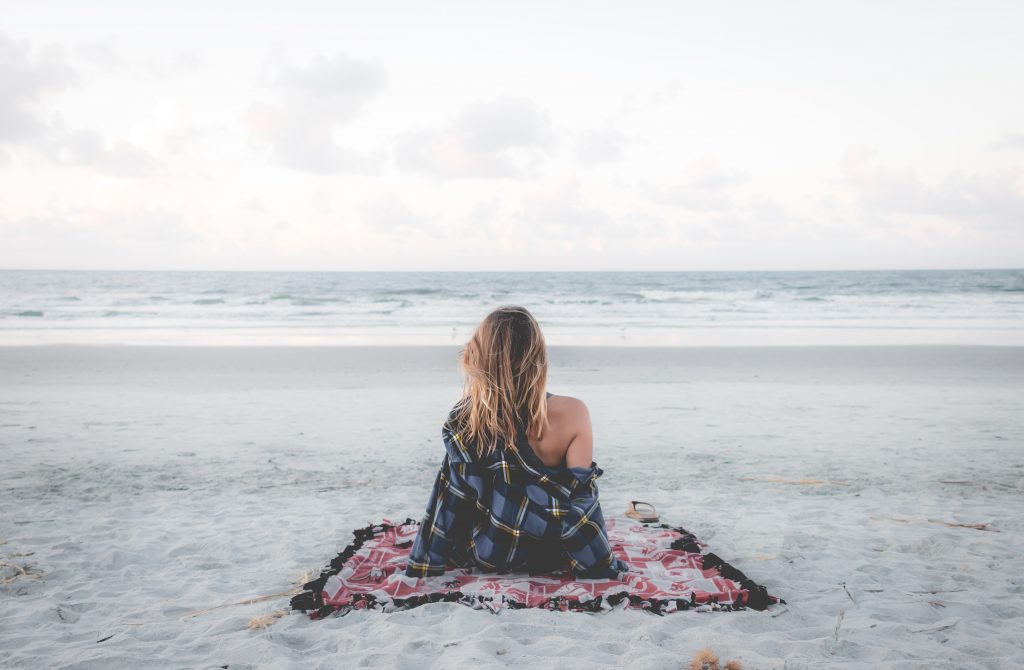
King Street
Although more chain stores have moved into this multi-block shopping stretch in the last few years, it’s still a walker’s paradise. If you love to avoid looking like “everyone else,” then get fully outfitted at Hampden Clothing, Worthwhile or Ibu Movement. Accessorize with a blingy bauble (heirloom, preferably) from Croghan’s Jewel Box or Joint Venture Estate Jewelers. Scent thyself with high-end spritzes from Cos Bar or Blue Mercury, shop for silver and the coffee table or curio to display it at George C. Birlant or the other antique shops, then accessorize your home with a piece of artwork from a variety of galleries, ranging from Hagan Fine Art to classics from the Audubon Gallery.
Joint Base Charleston
Joint Base Charleston (Air Base) is located about 10 miles from downtown Charleston, South Carolina, on approximately 3,400 acres of land within the North Charleston city limits in Charleston County. The base (Weapons Station), approximately 10 miles from the Air Base and 15 miles from downtown Charleston, is in the town of Goose Creek in Berkeley County. Both are located in the heart of the Lowcountry, the portion of historic South Carolina where pine and oak forests meet with the natural beauty of Intercoastal Waterway marshes and gorgeous barrier island beaches.
With a rich military history and a moderate cost of living, the area has attracted many military retirees that now call the Lowcountry home. The Navy has several Commands in Charleston, as does the Coast Guard. The greater metropolitan region has a population of over 700,000 and we enjoy a great relationship with civilian communities where we actively participate in many civic, social and cultural events
Military History
Air Force
The first flight took off from Charleston Army Air Field in 1931. The Air Force officially named its facility as Charleston Air Force Base in June 1953. For a thorough history of the installation, visit the installation’s homepage.
Navy
Commissioned in 1941, Naval Weapons Station (NWS) Charleston had two distinct missions: as home for two strategic submarine squadrons and a tender, and as an ordnance station with capacity for more than 60 million pounds of conventional ordnance. The ordnance mission continues today, and – Weapon Station is the only military installation in the continental U.S. with completely unencumbered explosive safety arcs. The Weapons Station has expanded its mission and DoD support role, and today is a training center for the Naval Nuclear Power Training Command, Nuclear Power Training Unit and other tenants. For more information on NWS, please visit the installation’s homepage.
Units
The 437th and 315th Airlift Wings provide rapid global mobility using the largest fleet of the C-17 Globemaster III. They bring armored vehicles, medical efforts, paratroopers and cargo where it’s needed.
The 628th Air Base Wing and the Naval Support Activity provide installation support services to 67 distinct organizations/mission partners, ALL service branches, and approximately 90K service members, retirees, and families. Approximately 20% of all jobs in the Charleston Metropolitan area tie to the base. The base contributes $11.1 billion annually to the local economy.
The Navy Nuclear Power Training Command, (NNPTC), trains Navy officers and enlisted in the science and engineering of the design, operations, and maintenance of the naval nuclear propulsion plants. More than 3K sailors graduate and continue on to the Nuclear Power Training Unit, (NPTU). At NPTU, students receive hands on training with two moored nuclear training submarines. These students will go on to execute the DoD’s no-fail nuclear mission.
It is a hub for the storage, maintenance, and export of military supplies and armored vehicles. Military cargo loads aboard Navy pre-positioning ships and supplied around the world.
The Naval Health Clinic provides health care services to 12K enrollees and 5K naval nuclear students.
Naval Information Warfare Center (NIWC) creates innovative solutions for the modern-day warfighter. Some of these solutions include satellite systems, undersea surveillance, and remote sensors.
Additionally, the Coast Guard partners with Joint Base Charleston units on river security and law enforcement operations.
Kid Friendly Activities
The historic Charleston City Market is a city landmark that provides a unique view of the heart of the city -its people. While shopping might not immediately come to mind when considering a list of things to do in Charleston, SC with kids, the City Market is an educational experience. Browse booths filled with local vendors, take a tour of the historic building, and enjoy the local cuisine. It’s all local people selling local goods that you can’t find anywhere else. You can even see Gullah descendants weave Sweetgrass baskets; only found in the area.
Savannah Bee Company
King St. in downtown Charleston, SC is known for its shopping. However, the best of them to visit with kids? Definitely Savannah Bee Company! As the name suggests, the company started in Savannah, GA. But chose Charleston as its very first storefront outside of that area. The entire store is honey, honey, and more honey – in lotions, mead, with honeycomb, without honeycomb, you name it.
Besides being absolutely delicious, what makes it fun is that you can taste [or try] everything there. And it’s delicious [or did I say that already?]. Bonus: the store associates there are absolutely phenomenal. Want to know something about honey or about bees? They’ll gladly share so that you can bee [see what I did there?] in the know
Children’s Museum of the Low Country
The Children’s Museum of the Lowcountry is not your typical children’s museum. Its mission is to encourage young children to discover the power of play. The museum has a series of interactive exhibits designed to spark their imagination, curiosity, and creativity. There is an art room, a theatrical studio, a kid-friendly garden, a shoppable market, and so much more.
If you have children aged 6 and under, definitely recommend this place as one of the things to do in Charleston, SC with kids.
South Carolina Aquarium
The South Carolina Aquarium is more than just an aquarium. It is an expedition through all the different types of habitats in South Carolina to see their native animals and plants. The aquariums is home to over 5,000 animals and has everything from bald eagles to sea otters to dolphins to sharks.
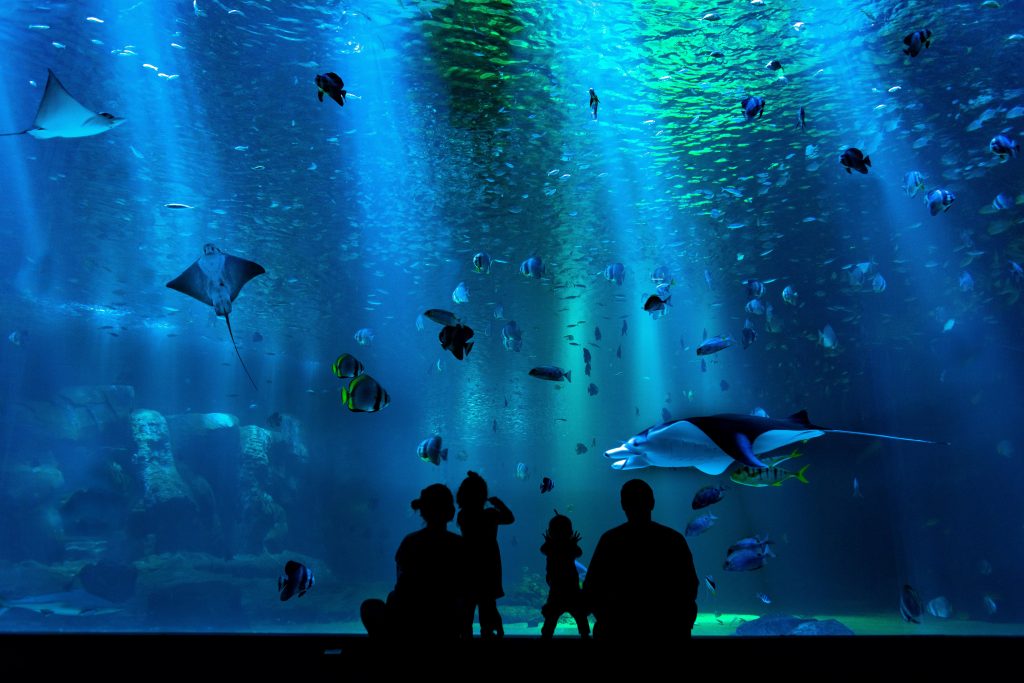
It is especially fun as one of the things to do in Charleston with kids because of its interactive exhibits. There is a touch tank where kids [and adults] can have a hands-on experience with animals like hermit crabs and sea urchins.
Visit
Make sure that you make time to visit Charleston this spring. You won’t regret it!
